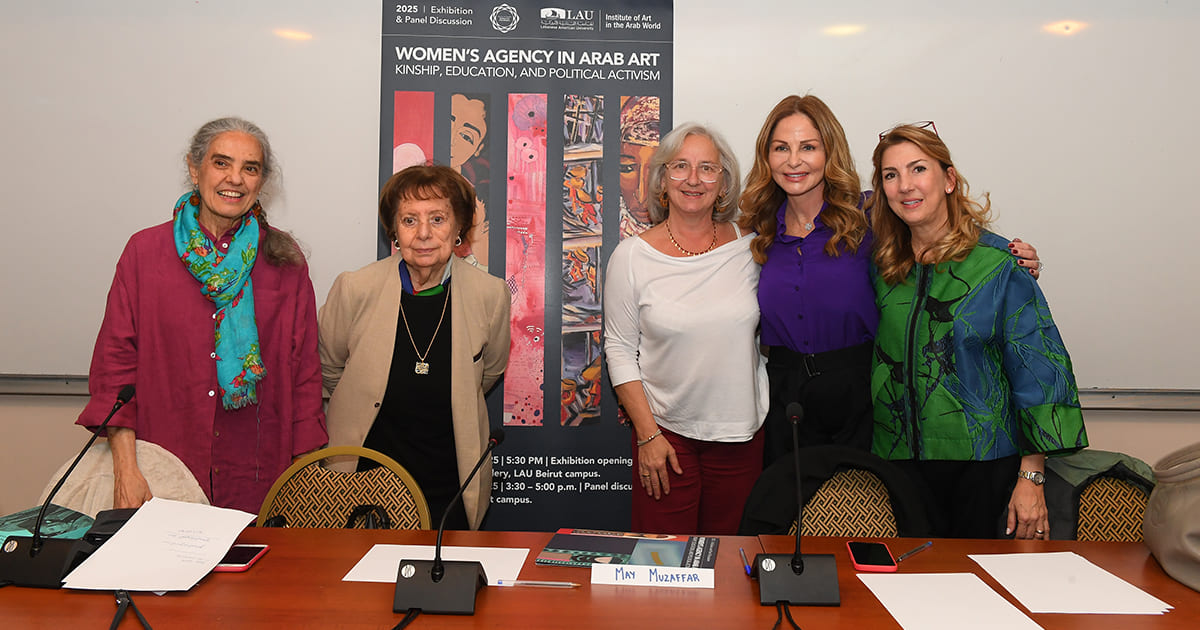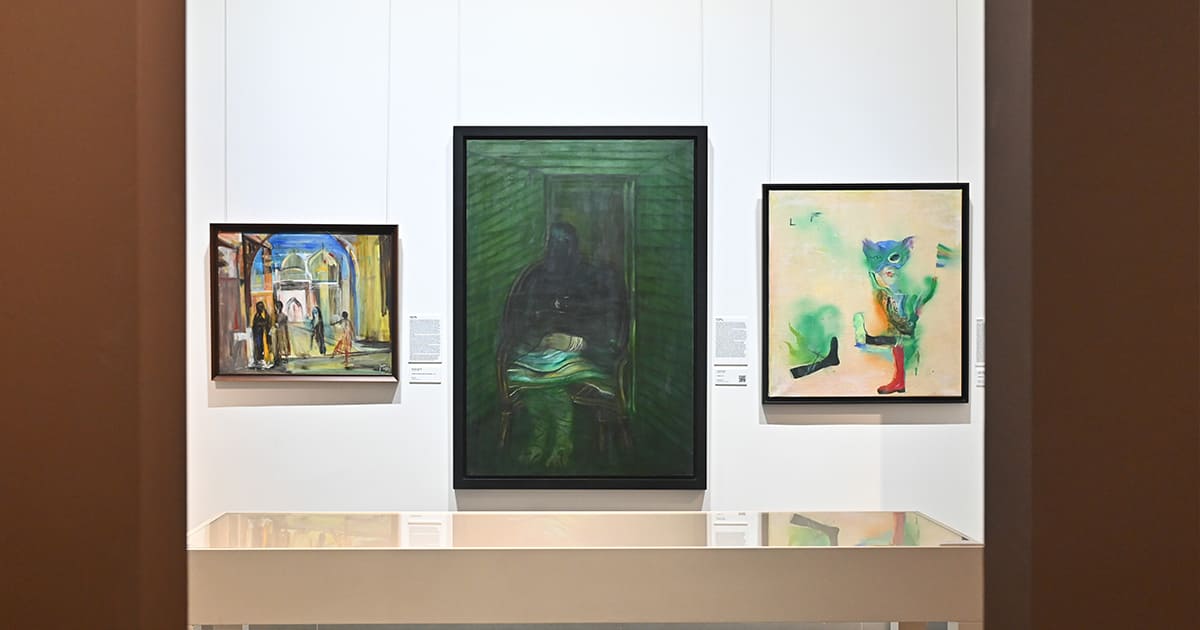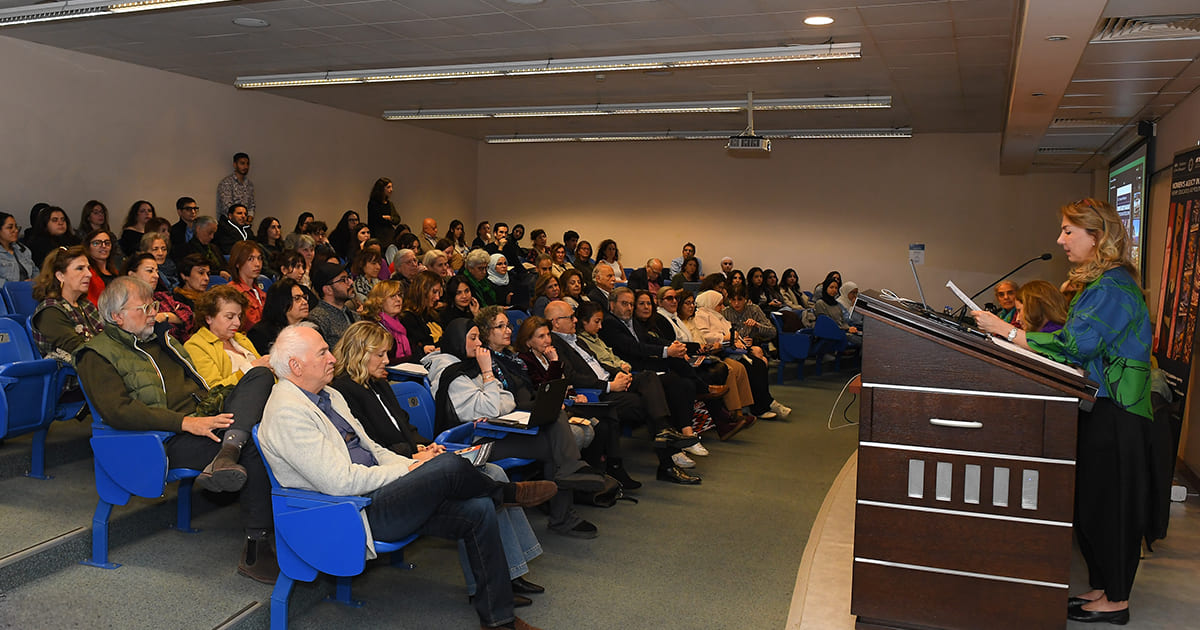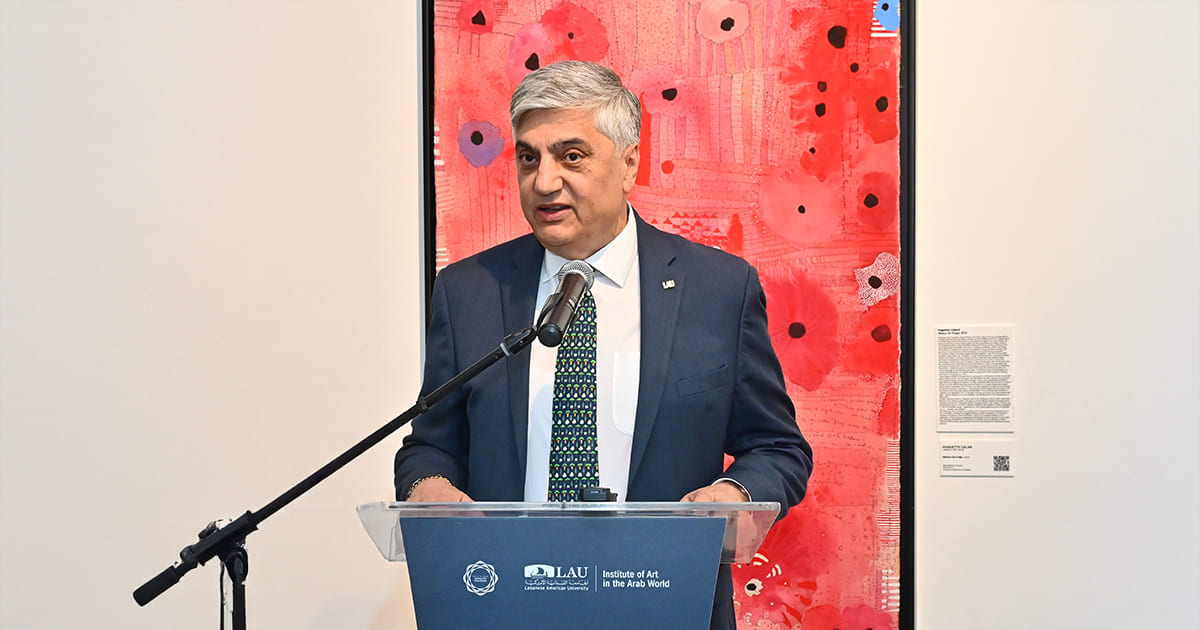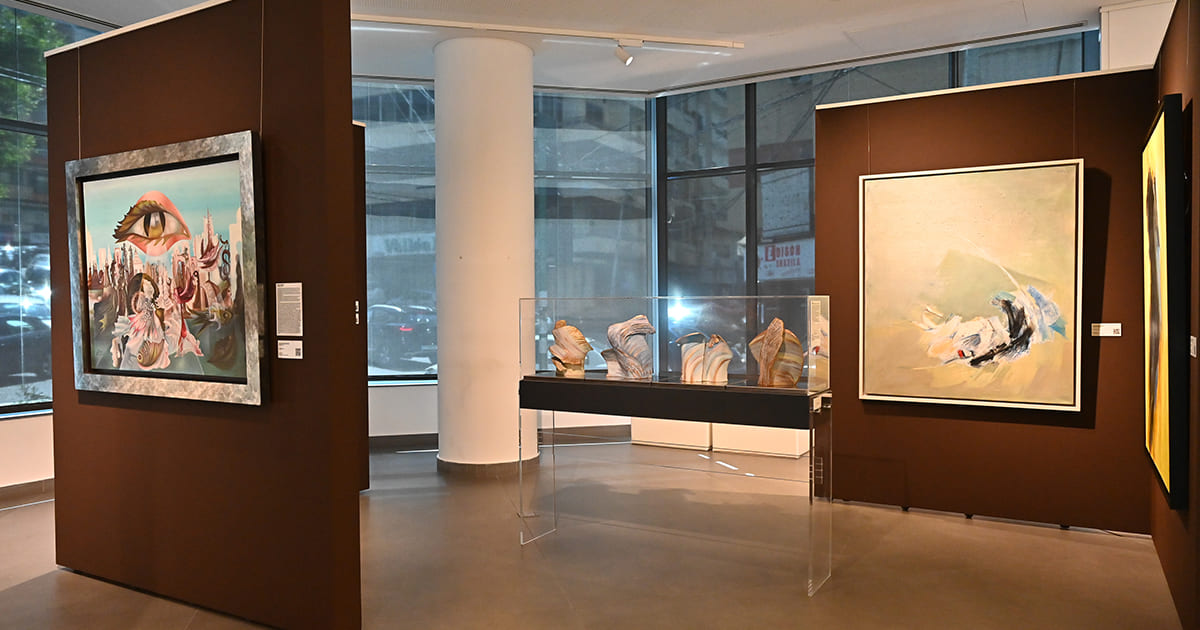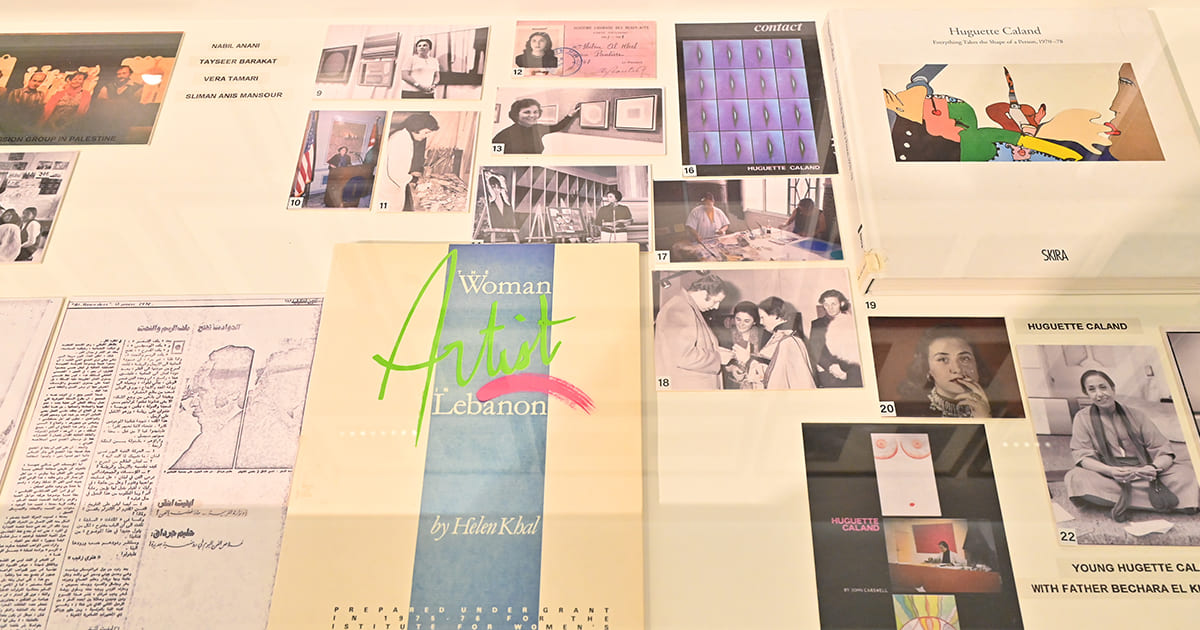Arab Women Artists and the Power of Preservation
LAU’s Institute of Art in the Arab World collaborates with the Dalloul Art Foundation to highlight the overlooked contributions of Arab women artists in shaping modern art and cultural memory.
Across the Arab world, many talented women have contributed to the creation of art while navigating cultural expectations and political challenges. Their stories, however, often go unnoticed, either because their work exists outside of established systems, or is preserved in personal correspondences, family collections and archives.
As part of its efforts to highlight the pivotal role women have played in shaping the evolution of visual arts, the Institute of Art in the Arab World (IAAW) at the LAU School of Architecture and Design (SArD), in collaboration with the Dalloul Art Foundation (DAF), held a symposium titled Women’s Agency in Arab Art: Kinship, Education and Political Activism on April 14, 2025 at the Beirut campus.
Moderated by Associate Professor and IAAW Director Yasmine Nachabe Taan, it aimed to document and celebrate the contributions of pioneering Arab women artists who helped shape modernist movements across the region during the mid-20th century.
The symposium featured a selection of artists born between 1905 and 1948, a generation that came of age during periods of tumultuous political and social transformation throughout the Arab world.
“The use of visual material as a tool for advocacy and social change has a long history in Arab feminist movements,” said Dr. Taan. “These women’s efforts have made way for the evolving discourse on gender, power and liberation in the Arab world.”
Among the women in question were May Muzaffar, an Iraqi poet and writer, and wife of the painter Rafa Nasiri; Ruba Salim, niece of Naziha Salim and daughter of Nizar Salim, both Iraqi artists; Vera Tamari (BA ’66), a Palestinian artist and educator; and Dr. Mona Knio (BA ’73), former associate professor of theater and chair of the then-Communication Arts Department at LAU.
Each artist, added Dr. Taan, was a foundational figure in the art education sector, whether as a wife, sibling or daughter. In one way or another, they were instrumental in the emergence of significant modern art movements and collectives in the region, such as the Baghdad Group for Modern Art, the New Vision Group in Palestine, the Hurufiyyah movement and more.
“As an institute that aims to promote artists who have long been on the margins of recognition, IAAW, under the leadership of Dr. Taan, continues to take effective strides toward expanding the historical canon of art and fostering inclusive narratives,” said SArD Dean Elie G. Haddad in his opening speech.
This sentiment was reflected in the words of DAF Director Wafa Roz, who indicated that when Salim preserved her family’s photographs, or Muzaffar spent decades archiving her husband’s paintings to safeguard his legacy, they were rewriting the rules of who gets remembered and how.
“The paths these women have taken in their art really show how they each exercise their own agency,” she said. “Each of them used their art to explore and reshape the many layers of meaning associated with memory.”
For Tamari and Dr. Knio—who graduated from the Beirut College of Women (BCW), now LAU—the university was conducive to this artistic discourse. They spoke of how their faculty helped them cultivate feminist pedagogies that empowered them to see art as a tool for social critique. Years later, Tamari went on to found the Birzeit University Museum under Israeli occupation, and Dr. Knio continues to draw on her time at the university to spark contemporary discussions in academia.
The symposium was followed by an art exhibition of 39 artworks by 19 modernist women artists and educators from Iraq, Egypt, Lebanon, Palestine, Jordan and Morocco at the Gezairi Building Art Gallery.
Welcoming the guests, LAU President Chaouki T. Abdallah reflected on how “LAU, women and art have been together since the very beginning.” Having nurtured generations of women artists across the Arab world, thanks in large part to the arts being central to the university’s mission from the outset, “we take pride in hosting today’s diverse visual expressions and interpretations of the region’s history,” he said.
The exhibition notably featured works by artists with direct ties to the university’s history, including Princess Wijdan Bint Fawaz Al Hashemi (BA ’61), a distinguished alumna who studied art history at BCW and most recently received an Honorary Doctorate of Humane Letters in 2024 in recognition of her contributions to the arts.
Also represented was Sidon-based artist and BCW’s own Samia Osseiran Junblatt (BA ’65), who became a professor of fine arts, her field, at the university between 1970 and 1972.
Among the paintings were archival material chronicling the broader efforts of women artists in shaping and promoting art in the region, such as artist Helen Khal’s book The Woman Artist in Lebanon, published by LAU’s Arab Institute for Women (AiW) in 1987.
The curated body of work invited the observers to reconsider how artists have handled their craft to immortalize cultural memory across generations.
